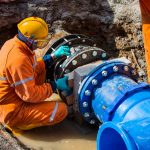Different types of excavators and excavator buckets
Depending on the work you are planning, the market offers different types of buckets and excavators. Before starting your project, make sure you understand the difference between them. As each of them is designed for different purposes, with different capacities and limitations.
Different types of excavators
Whether you decide to buy or rent excavators and heavy equipment, you need to understand the differences between various types of excavators.
Hydraulic excavator
By far the most powerful type of excavator you will find is the hydraulic one. Primarily used in the mining industry, its use has gradually become more widespread over the years.
Its main characteristic is a hydraulic bucket, ideal for lifting particularly heavy loads, such as rocks, minerals and other similar items.
Not all jobs are suitable for a hydraulic excavator, and in some situations, it can be too clumsy. Typically, a 16-ton excavator is designed for commercial excavation work, whereas a 25-ton excavator is best suited for larger projects, such as a multiplex excavation.
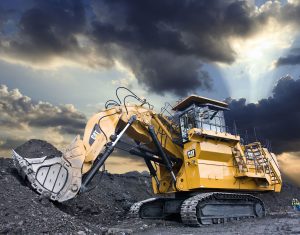
Mini excavator
The main difference between other types of excavators and a mini-excavator is their capacity and the digging depth.
Thanks to its small size, a mini-excavator is much more manageable, making it more efficient in a smaller work area. Because of its track design, it is not suitable for long-distance work.
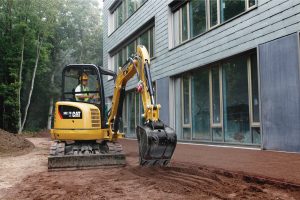
Crawler excavator
While there are numerous types of excavators and buckets, the most common is the crawler excavator, the gold standard in excavators. As the name suggests, this model does not have wheels. Instead, it has a pair of tracks, providing greater pulling power.
This characteristic defines its main advantages as well as its only disadvantage. The rails give it better stability. That makes it the best choice to work on the high, steep, or muddy ground. It’s probably the most flexible equipment of its type.
Its travel speed may be a little slower than its wheeled alternative.
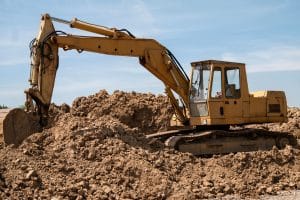
Crawler excavator
While there are numerous types of excavators and buckets, the most common is the crawler excavator, the gold standard in excavators. As the name suggests, this model does not have wheels. Instead, it has a pair of tracks, providing greater pulling power.
This characteristic defines its main advantages as well as its only disadvantage. The rails give it better stability. That makes it the best choice to work on the high, steep, or muddy ground. It’s probably the most flexible equipment of its type.
Its travel speed may be a little slower than its wheeled alternative.
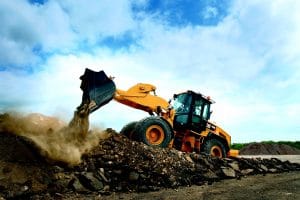
Cable excavator
Also known as a dragline, this model is taller than other types of excavators. It also has a unique operating system. It uses a lifting cable and a dragline to move the bucket up and down.
The distinctive design of this vehicle makes it ideal for digging deep, up to 65 meters on standard models. But its large size and relatively stiff structure make it suitable for specific jobs only.
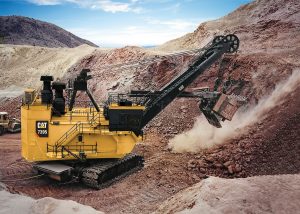
Long reach excavator
As the name suggests, long-reach excavators have a longer boom and arm. These can be anywhere from 12 to 30 meters long, enabling you to access remote areas.
Long-reach excavators designed jobs where the terrain or construction site prevents work crews from getting close. These excavators are ideal for demolition projects and work over rivers or lakes as examples of hard-to-reach areas.

Different types of excavator buckets
A bucket is a removable attachment designed to work with an excavator. There are many different types of excavator buckets, each with its unique characteristics: digging, stockpiling, or even moving materials.
Trapezoid bucket
Also known as the V-bucket, the trapezoid bucket is an excellent attachment for your precise excavation projects. Thanks to its wide bottom, it guarantees better performance when repairing ditches.
4 in 1 bucket
The 4-in-1 bucket is a multipurpose attachment. It combines 6 features: scraping and shifting, loading, levelling, backfilling and grabbing.
The versatility of this bucket is perfect for clearing the ground after the demolition of a building, saving you time when doing earthworks.
Banana bucket
Banana buckets, also known as trench buckets, are designed for trenching cohesive materials for easy unloading or digging in narrow areas, like power line installation work.
Clean-up bucket
The clean-up bucket is used for digging, grading, and finishing work. Created without teeth and wide enough, it is mainly used for a smooth finish when grading or backfilling.
Excavation Chanthier will help you with your projects
Bottom line: there are many types of excavators and buckets to choose from for your excavating and demolition projects.
Renting an excavator can be a good idea for your projects, especially if you don’t need it on a daily basis. There are many advantages if you get advice from professionals. Excavation Chanthier rental experts will answer all your questions and guide you in choosing the right excavator for your project.
Call on our professionals at Excavation Chanthier for all your excavation and demolition needs. Contact us today to discuss your projects.







